Touchdown in Timor
There was once a small crocodile who lived in a swamp. His dream was to grow to an enormous size, but food was scarce and the swamp too small to support enough prey. “I must get out of here,” he thought, so the crocodile left the swamp and began his journey to find better waters. But that day the sun was strong, baking the ground and weakening him until he could no longer move. He lay roasting alive in the sand, waiting to die. Soon a boy passed by and, taking pity on the little crocodile, carried him to the edge of the sea. The crocodile thanked the boy for his kindness, telling him, “If you would like to travel, to one day cross the sea, come and see me.”
The two parted ways, with the boy always remembering that promise. A few years later the crocodile had become plump and healthy, so much so that the boy could barely recognise him when he returned. “Brother crocodile,” he said, “I want to see the world.” The crocodile agreed, and the boy climbed on his back, riding it like a canoe. Together they set off, following the sun as it rose in the east.
For years they travelled across the ocean, marvelling at the endless horizon, the stars in the sky, and the many islands they passed. But now the crocodile was old and could go no further. “Listen,” he told the boy, “my dream is over.” As the crocodile died, he grew and grew, until his scales became hills and his back a majestic ridge of mountains. And that is how ‘Grandfather Crocodile’, Avo Lafaek, became the island of Timor.
* * *
Three days before Christmas, Bama and I are aboard a Sriwijaya Air flight, midway from Bali to Dili. The bearded man in the aisle seat, previously silent, turns to me and poses an unexpected question. “You work in Timor?”
This is how we meet Marqy, a self-described freelance painter and musician who speaks fluent English. In him we see a new, emergent class of Timorese – well-educated, up-to-date and worldly. Others on the plane sport trendy outfits, sunglasses and fashionable dyed hairstyles. Marqy says many are students on a scholarship to Bangkok, where he has been working for the past two and a half weeks.
As the conversation flows, I quickly realise that our seatmate may be our best resource for basic phrases. “Can you teach us some Tetum?” Marqy pulls out a small notepad and begins scribbling. Diak ka lae? How are you? Hau diak, obrigadu. I’m fine, thank you. Hau kontenti hasoru ita bo’ot. I’m pleased to meet you.
“25% of our language is from Portuguese, 25% is Indonesian and the rest is [original] Tetum,” he explains. Marqy adds that the East Timorese are descended from Indo-Malay settlers, Aborigines from Australia and Papua, with 35 languages across a national population of only 1.2 million people. I ask him about crocodiles and Timor’s creation myth, to which he nods knowingly. “You’ll see the mountains before we land.”
Marqy is right. We make a wide turn for the descent into Nicolau Lobato International Airport, taking in a bird’s eye view of Dili and the legendary crocodile’s scales, falling away into the Banda Sea. Then our plane hits the runway with a roar, thundering past a row of palms bleached a pallid grey in the harsh midday light.
Inside the dark, quietly chaotic terminal building, we join the free-for-all at the single baggage carousel, which moves at surprisingly great speed. “Deskulpa, deskulpa!” I edge between a tall, lanky Timorese student and another overseas visitor to grab my suitcase before it passes out of reach. Success! The student helps me pull it onto the ground, and my case falls clumsily at his feet.
Dili has the feel of a booming frontier town – full of gritty optimism and corrugated iron roofs, with more traffic than I imagined. On the way in from the airport, we pass the upscale shopping centre of Timor Plaza, then an all-glass building – presumably the country’s first such office block – under construction. I recognise Motael Church, a centre of resistance under the Indonesian occupation, and the whitewashed Government Palace, now the backdrop for an enormous Christmas tree. The palace is among a handful of well-tended civic buildings, with some, like the Resistance Museum and the Xanana Gusmão Reading Room – East Timor’s first public library – boasting modern extensions.
As the taxi pulls up outside our hotel, two boys leap up from their seats in the shade of the front porch. In their hands they hold a collection of trinkets, among them several carved wooden crocodiles. Inside, the hotel has WiFi and 60 international channels on cable in English, Portuguese, Indonesian, French and Mandarin. The building itself is austere in white and cerulean blue, structured like a fortress, with few windows and a staircase circulating the central courtyard.
We meet the Portuguese manager, Carmen, in her office just off the courtyard. She has a strong opinion about the mall and glass tower we had seen en route from the airport. “That’s not development,” she says. “That’s growth… it only benefits a small number of people. You’ll see the contrast on the streets. Outside Dili, outside the central zone, lots of people still live in huts with no electricity and no water.”
But Carmen also speaks of the beauty to be found in the countryside, and its untapped resources. I ask about Timorese coffee, to which she points out a bag of powder, locally grown in the mountain district of Letefoho, on her shelf. “This was given to me as a gift,” she says. Carmen holds it to our nostrils and I breathe in the heady aroma from a small vent near its folded top. The smell is reminiscent of dark chocolate.
There are no elevators, Carmen tells us, in case there is a power outage. This fact alone is oddly exhilarating, and our hotel strikes me as the kind of place where a foreign correspondent would hunker down, anxiously filing news stories and uploading footage as important, world-shaking events took place outside. But it is not 1999 and East Timor has been independent – and mostly peaceful – for more than a decade. Carmen has lived and worked in the country since late 2002, and I ask her one final question before we head upstairs. “I’ve seen some small changes,” she says hopefully, “baby steps.” ◊


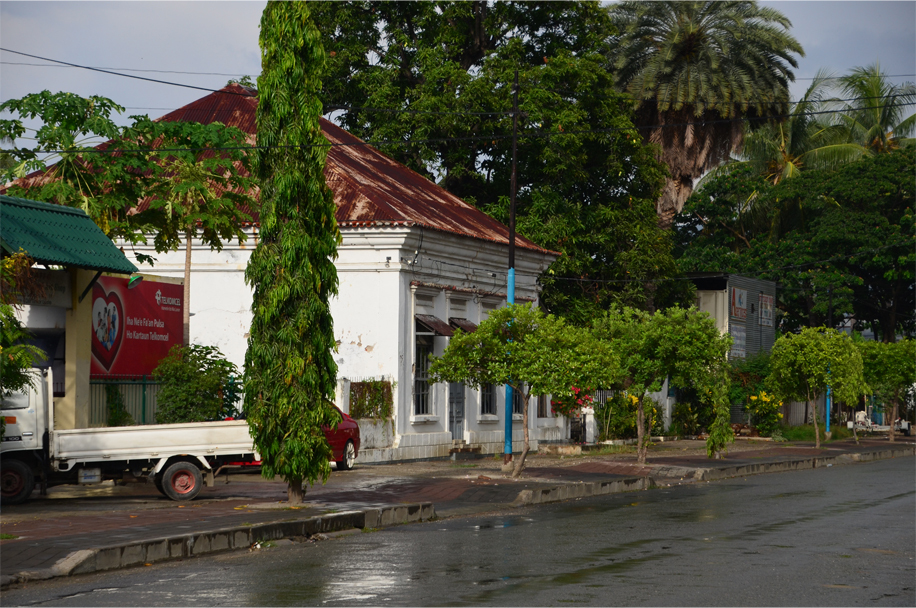

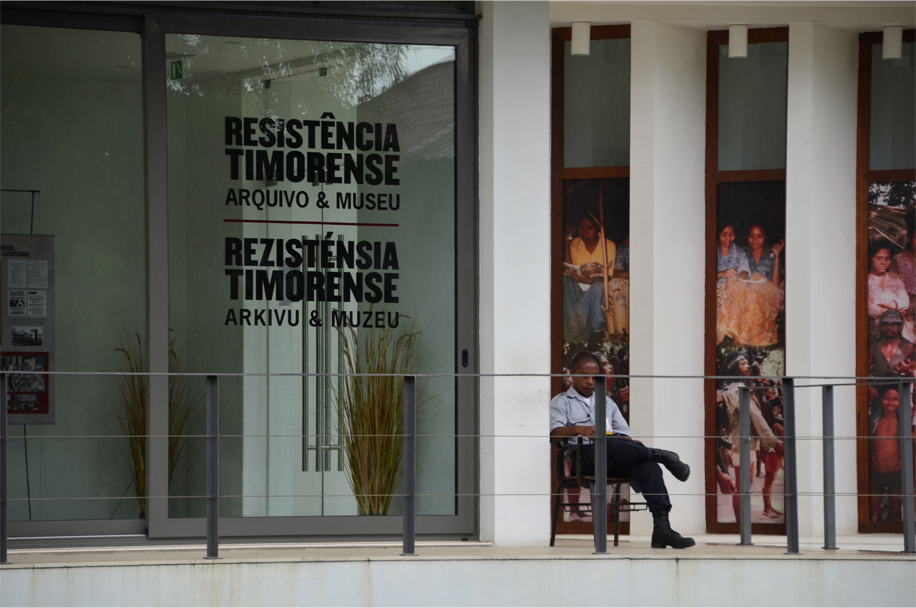


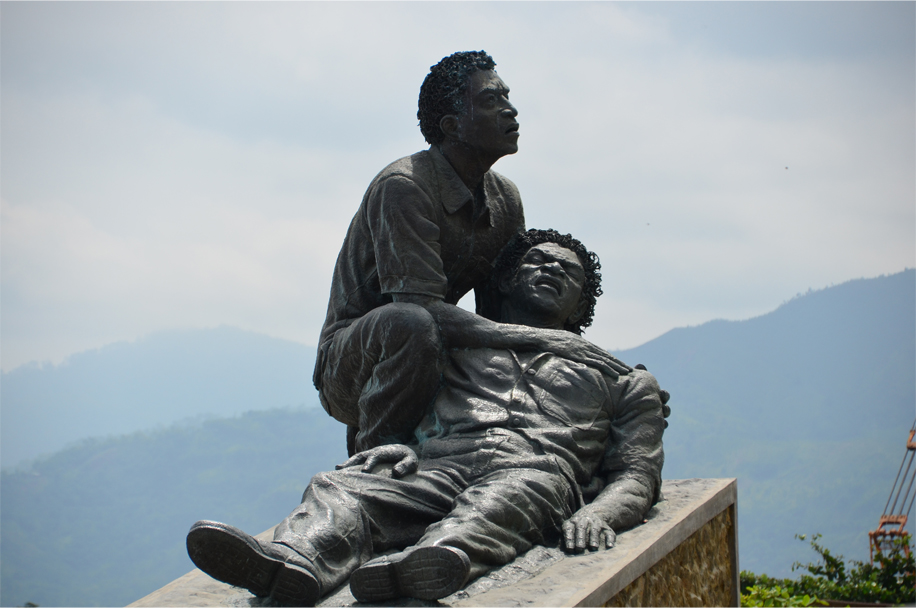



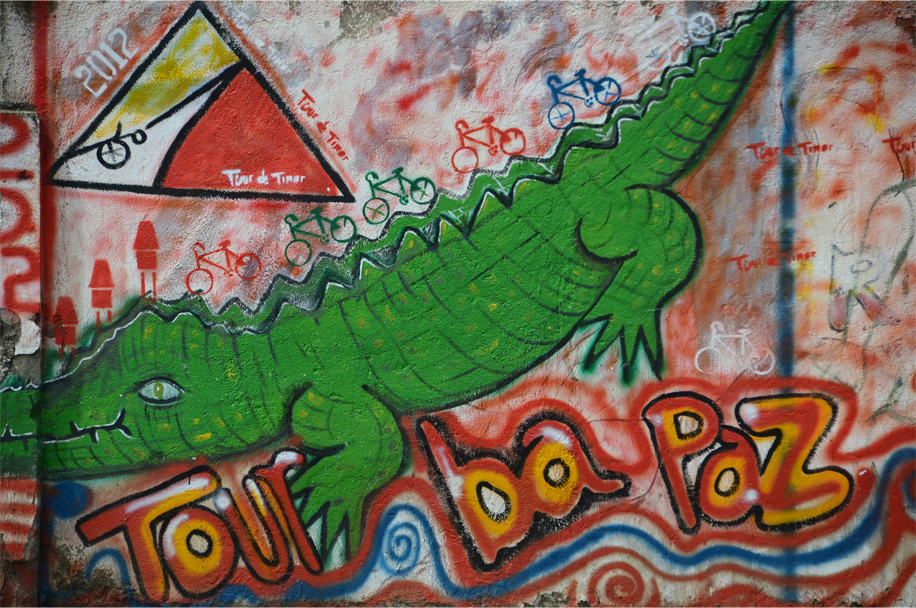
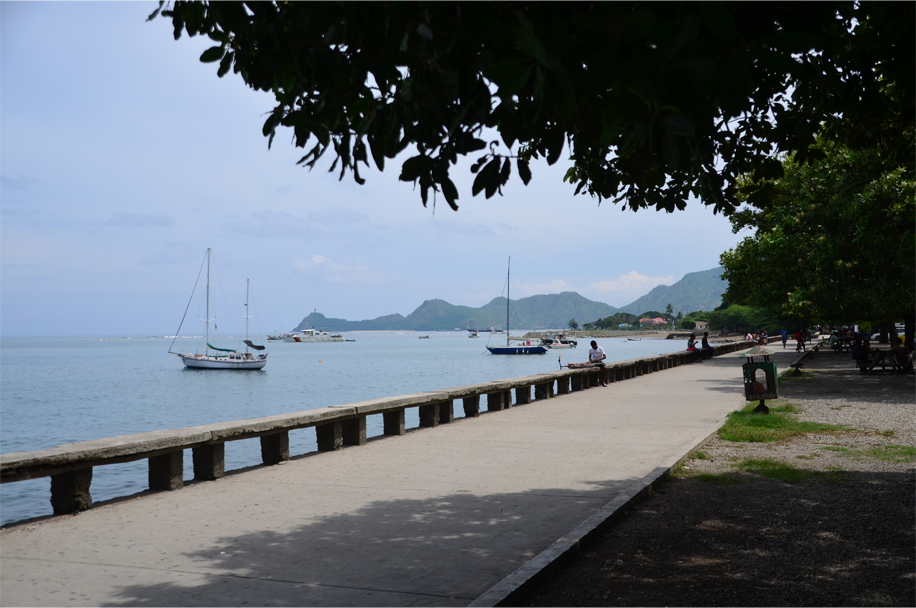


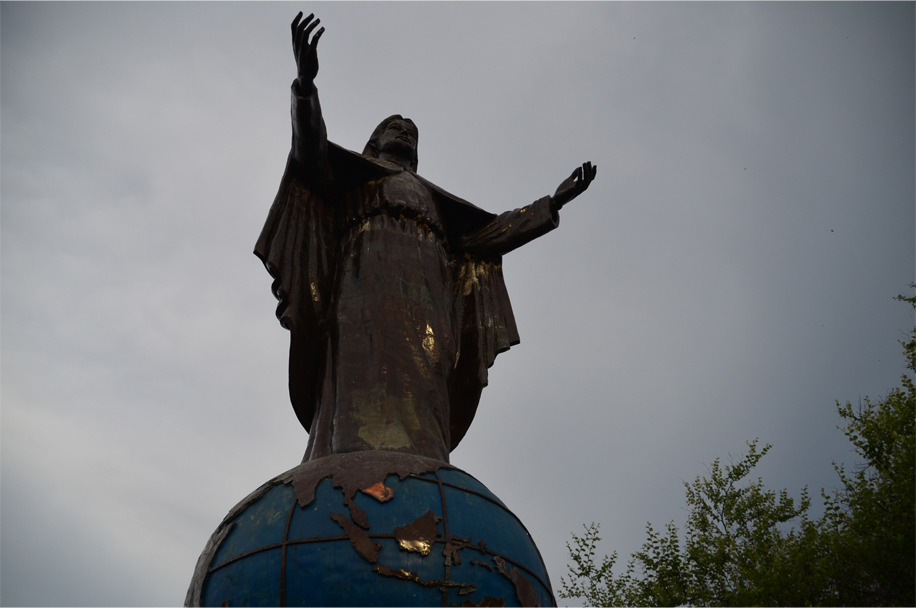
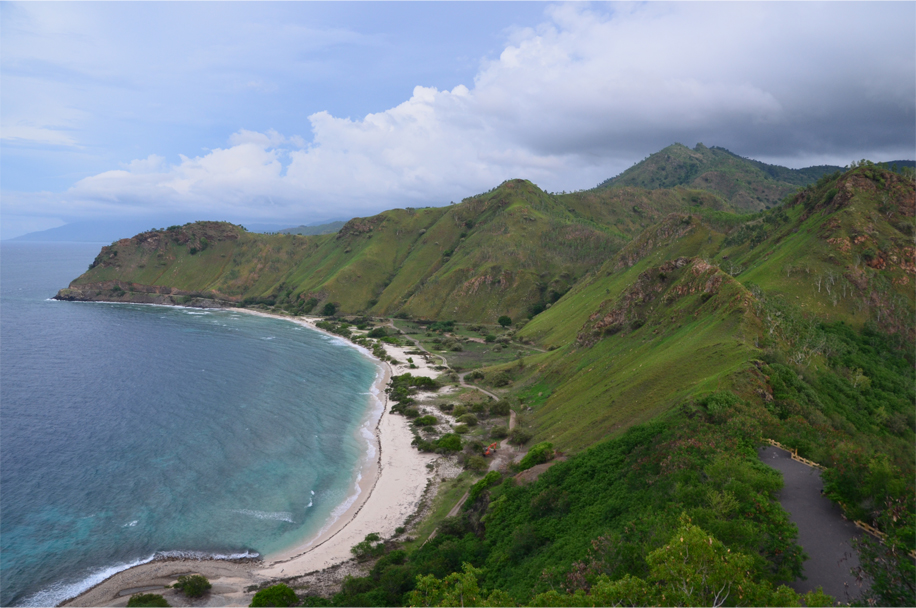




Beautiful!
Thank you!
Thank you for introducing this country. I had great joy reading this post. Beautiful pictures
It’s my pleasure, thanks too for the comment. 🙂
Nice pictures!! And heartening to see more travellers heading to Timor. I visited there 2 weeks ago, and loved the tranquil life of Dili. Bad weather made me to stop at Maubisse and couldnt continue further, but I am surely going back.
Ah yes, we also visited during rainy season. Dili was a great place to relax, although it was a bit of a problem finding food during the Christmas holidays! East Timor is also on my list of return destinations… there is so much that I still haven’t seen.
Great pictures and and even better writing..!
Thank you, Shikha!
So glad to see other blogs on East Timor! I really love that place! 🙂 http://followmywanders.wordpress.com/2013/10/10/places-to-explore-in-east-timor/
I too am glad you wrote about East Timor, and what a privilege to have been there three times! We missed out on the Tais Market though, must make a point of stopping by the next time I go. 🙂
Until now, Timor had a relatively low spot on my travel list. Now I’m anxious to visit! Thanks for sharing – especially the creation myth!
-Margaret
You’re welcome, Margaret. East Timor is a beautiful country – I would say there’s lots of potential for adventure tourism. The diving off its northern coast is said to be superb.
Beautifully told, as always James ( 🙂 ) and so good to see Dili looking like a ‘normal’ town, not a war zone. I was afraid the trees and squares would have been damaged. Now, that final, gorgeous shot of the beach … what is that little touch of red/orange just back from the road? Don’t tell me it’s an earth-moving-machine?
Thank you, Meredith. 🙂 I was pleasantly surprised by Dili – previous visitors had said how ugly it was, but that criticism is somewhat unfair. We did spot the occasional burned-out ruin, although the signs of construction were far more obvious. That said, the troubled past is still present in the many high fences and gated compounds.
Sadly the red/orange blip on the beach was in fact an earth-moving machine… I would hope it was only there to help repair the road. That beach clearly does not need a car park!
I like that first painting pic so much. really cool 😀
It is a lovely mural, isn’t it? And in the Timorese national colours too. 🙂
Yeah. I stay in BKK I see great paintings all day long. many very beautiful. but this one really had something extra. simple. Interesting, Nice harmony of colors. and now you added Timorese national colors.
Thanks for agreeing with the idea of coming to East Timor at the first place! It was such a unique journey, indeed. I was very impressed by how friendly the immigration officers were – after years of Indonesian occupation that’s the last thing I expected before coming to Dili. The fastest baggage carousel that I’ve ever seen, the ubiquitous signs and billboards in Bahasa Indonesia, the unique hotel we stayed at, the mixed Portuguese-Indonesian-Timorese feeling everywhere I looked, Dili was so different from my experiences traveling to other places before. Hopefully years from now it grows into a better city for its residents. Great photos, James! I really love that last picture.
You’re welcome, Bama – it was truly a trip like no other! I really hope the revenue from oil and gas can be pumped into East Timor’s development… the nation has a real opportunity to grow and prosper if it is governed correctly.
Great story and trip, James! 😀
Thank you, Sophie! I still have more to come on East Timor… 😀
So to get around is …rent a car or? Yea, well cycling might be limited to shores and maybe serious grades….
Glad you saw the island at peace for now. Or maybe there’s something going on…
Yes, the best way is to rent a car and driver – although there is an annual Tour de Timor which promises lots of steep climbs and downhills! East Timor is a gorgeous place with wonderful people… I hope it remains peaceful long into the foreseeable future.
A beautiful narrative accompanied by some of your best photos James. That last shot is breathtaking! The calm and beauty you present is indeed unexpected, perhaps due to the standard misconceptions of this war torn country. They seem to have come a long way in just over a decade! Bama and you are doing a great job of putting Timor on your readers bucket lists 🙂
Thank you, Madhu. I wonder what the next 10 years will bring to East Timor, hopefully sustainable growth and development for all – not just to those with a hand in the oil and gas industries. There’s no doubt Bama and I will be back at some point, this time we only experienced a small part of the country. 🙂
Such an amazing country – your photos brought back memories of a visit I made (years ago now). Thanks!
You’re welcome, Rebecca! East Timor is definitely on my list of repeat destinations – next time I would love to head east to Jaco Island.
Lovely piece, James. One thing, though. You are using ‘Timorese’ as if it’s exclusively used for East Timorese while in fact West Timorese of East Nusa Tenggara Province are Timorese as well.
Thanks for the note, Ari. I appreciate your attention to detail – and am glad you read it so closely. I’m mindful of the political distinction between West and East Timor, and the shared identity (though separated by colonial borders), but everyone we spoke to there, including the East Timorese themselves, tended to drop the ‘East’ when referring to the people. That’s why I felt it was acceptable to shorten it to ‘Timorese’ in several instances in the text.
Hi James, Thank you for visiting my country.
There are still many beautiful places that I recommend to visit, including Oecusse enclave, jaco island at the end of Timor island, Ramelau mountain, Pope 2 statue.
Hi Mouzinho, obrigadu for the lovely comment. I really enjoyed my time in Timor-Leste and found the experience a truly eye-opening (and moving) one. Will take your advice and explore more places beyond Dili and Baucau the next time I go!